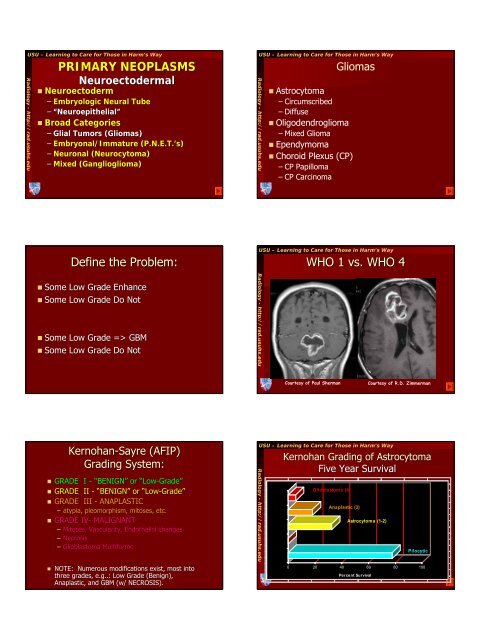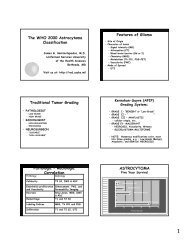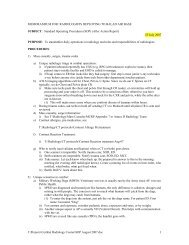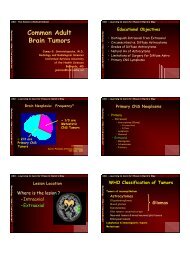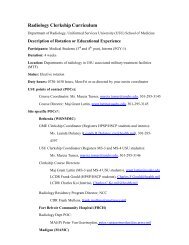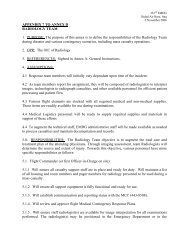the who 2000 tumor classification - Radiology - Uniformed Services ...
the who 2000 tumor classification - Radiology - Uniformed Services ...
the who 2000 tumor classification - Radiology - Uniformed Services ...
- No tags were found...
Create successful ePaper yourself
Turn your PDF publications into a flip-book with our unique Google optimized e-Paper software.
USU – Learning to Care for Those in Harm’s Way<strong>Radiology</strong> - http://rad.usuhs.eduPRIMARY NEOPLASMSNeuroectodermal• Neuroectoderm– Embryologic Neural Tube– “Neuroepi<strong>the</strong>lial”• Broad Categories– Glial Tumors (Gliomas(Gliomas)– Embryonal/Immature (P.N.E.T.(P.N.E.T.’s)– Neuronal (Neurocytoma)– Mixed (Ganglioglioma)USU – Learning to Care for Those in Harm’s WayGliomas<strong>Radiology</strong> - http://rad.usuhs.edu• Astrocytoma– Circumscribed– Diffuse• Oligodendroglioma– Mixed Glioma• Ependymoma• Choroid Plexus (CP)– CP Papilloma–CP CarcinomaDefine <strong>the</strong> Problem:• Some Low Grade Enhance• Some Low Grade Do Not• Some Low Grade => GBM• Some Low Grade Do NotUSU – Learning to Care for Those in Harm’s WayWHO 1 vs. WHO 4<strong>Radiology</strong> - http://rad.usuhs.eduCourtesy of Paul ShermanCourtesy of R.D. ZimmermanKernohan-Sayre (AFIP)Grading System:• GRADE I - “BENIGN” or “Low-Grade”• GRADE II - “BENIGN” or “Low-Grade”• GRADE III - ANAPLASTIC– atypia, pleomorphism, , mitoses, etc.• GRADE IV- MALIGNANT– Mitoses, Vascularity, , Endo<strong>the</strong>lial changes– Necrosis– Glioblastoma Multiforme• NOTE: Numerous modifications exist, most intothree grades, e.g..: Low Grade (Benign),Anaplastic, , and GBM (w/ NECROSIS).USU – Learning to Care for Those in Harm’s Way<strong>Radiology</strong> - http://rad.usuhs.eduKernohan Grading of AstrocytomaFive Year SurvivalGlioblastoma (4)Anaplastic (3)Astrocytoma (1-2)Pilocytic0 20 40 60 80 100Percent Survival


